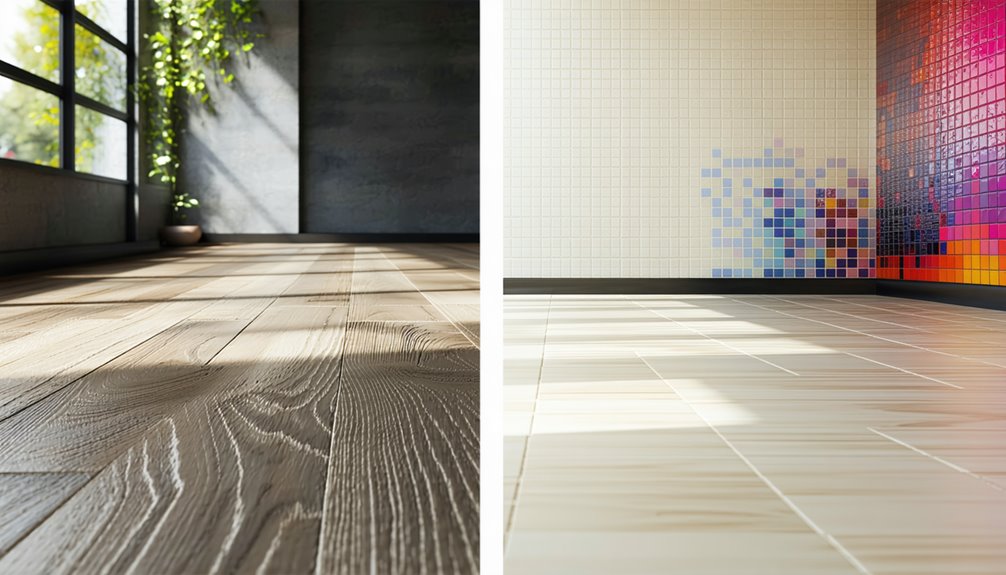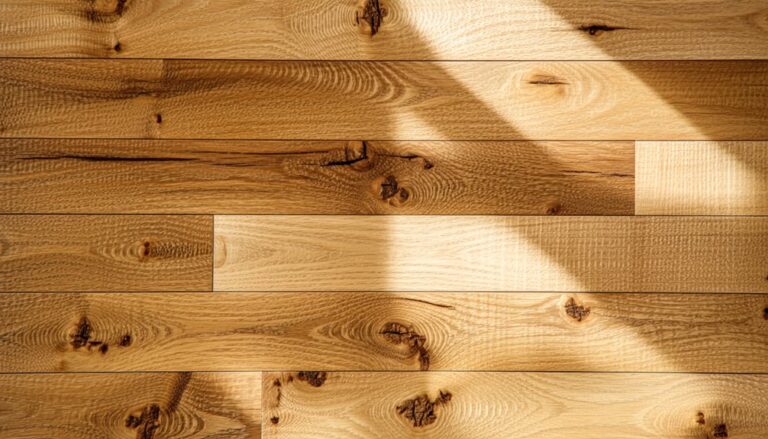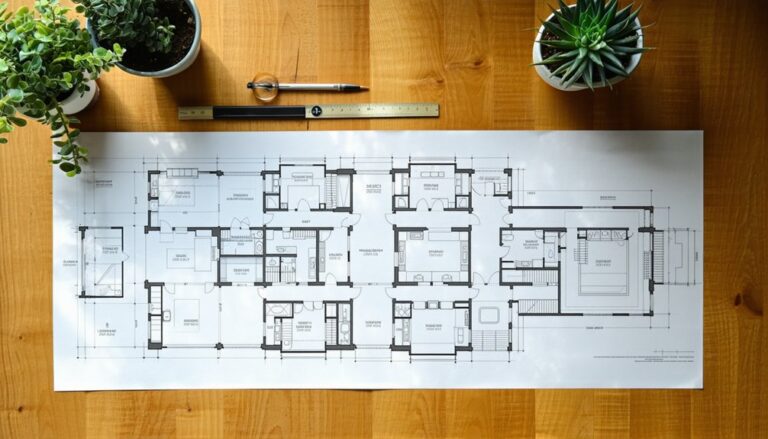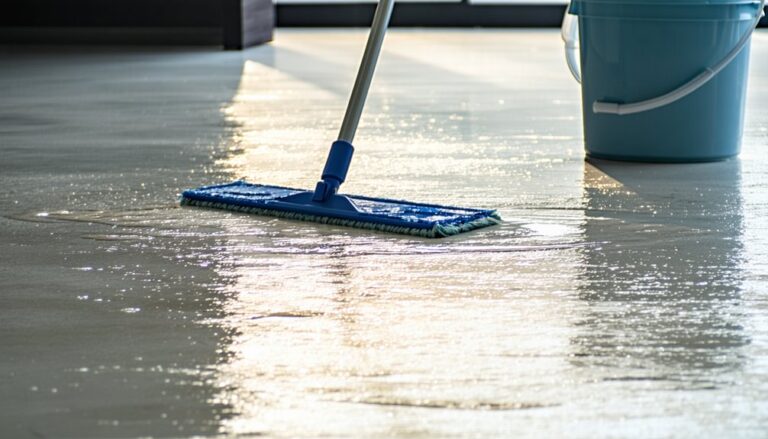Laminate and vinyl flooring differ primarily in composition, installation, and performance. Laminate consists of layers including a protective coating and a core layer, designed for durability but less water-resistant. In contrast, vinyl excels in moisture resistance due to its PVC composition, making it ideal for wet areas. Installation methods vary; laminate usually employs a click-lock system while vinyl can be glued down or installed as sheets. Both options offer aesthetic diversity, but vinyl generally allows more customization. Understanding these distinctions helps you choose the right vloeren for your space, and further insights will clarify their respective advantages.
Composition of Laminate Flooring
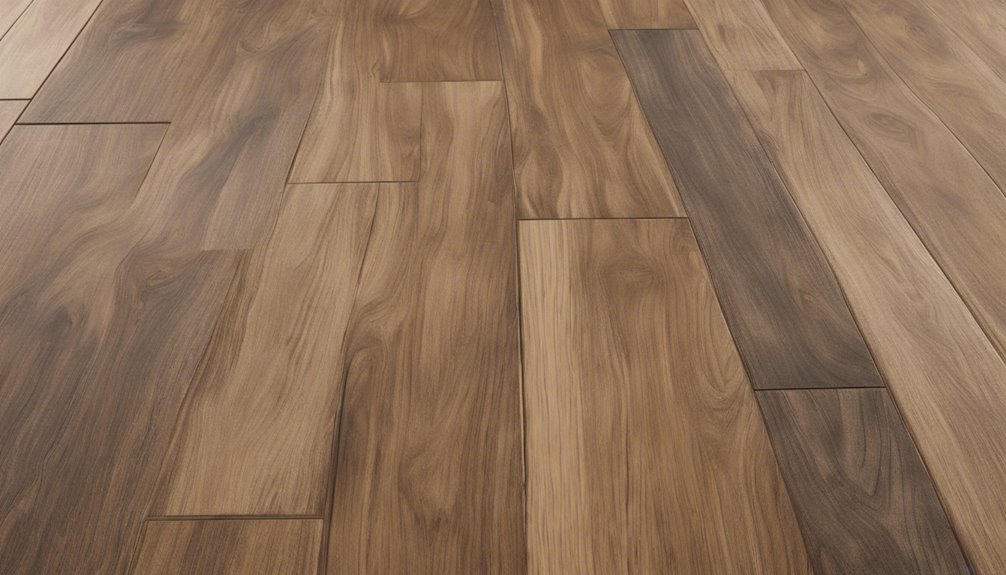
Laminate flooring typically consists of four main layers, each serving a specific purpose. The top layer is a clear protective coating, safeguarding against scratches and stains. Beneath that, the design layer features high-resolution images of various material types, allowing you to mimic wood, stone, or other aesthetics. The core layer provides stability and durability, often made from high-density fiberboard (HDF) or similar materials. Finally, the backing layer supports the entire layer structure, offering moisture resistance and sound absorption. This combination of material types guarantees that laminate flooring is not only visually appealing but also resilient, making it an excellent choice for those seeking both style and practicality in their living spaces.
Composition of Vinyl Flooring
Vinyl flooring is composed of multiple layers, each designed to enhance its performance and appearance. The top layer is a clear wear layer that protects against scratches and stains. Below that, a printed vinyl layer displays various designs, catering to different vinyl types, such as luxury vinyl tile (LVT) and vinyl sheet. The core layer provides durability and stability, while the backing layer offers cushioning and moisture resistance. These layers work together to create a flooring solution that's versatile for various vinyl applications, including residential and commercial spaces. Whether you're looking for something stylish for your home or a tough option for a busy office, understanding the composition helps you choose the right vinyl flooring for your needs.
Installation Methods
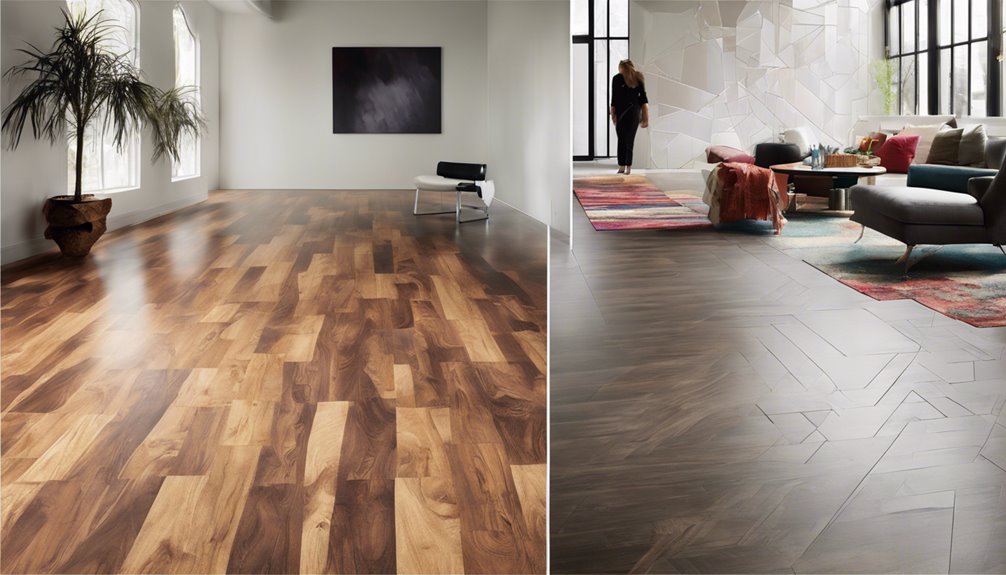
Understanding the composition of vinyl flooring sets the stage for exploring its installation methods. You'll find two primary methods: the click lock system and the glue down method. The click lock system allows you to easily connect planks without adhesive, making it a favorite for DIY enthusiasts. It provides a floating floor solution, which means it can expand and contract without issues. On the other hand, the glue down method involves applying adhesive directly to the subfloor before laying the vinyl. This method offers a more permanent solution, ensuring your flooring stays in place despite heavy foot traffic. Depending on your project's requirements and your skill level, you can choose the installation method that best suits your needs.
Onderhoudsvereisten
While both laminate and vinyl flooring offer durability, their maintenance requirements differ greatly. For laminate, you'll want to use specific cleaning techniques to prevent water damage, while vinyl is more water-resistant and easier to clean. Here's a quick comparison for your reference:
| Vloertype | Onderhoudsvereisten |
|---|---|
| Laminaat | Dry mopping, minimal water |
| Vinyl | Damp mopping, versatile cleaners |
| Long Term Care | Avoid harsh chemicals |
| Laminaat | Use felt pads on furniture |
| Vinyl | Regular sweeping recommended |
Regular upkeep is essential for both types to guarantee longevity. Understanding these maintenance requirements helps you enjoy your flooring with minimal hassle, giving you the freedom to focus on what truly matters.
Durability and Performance
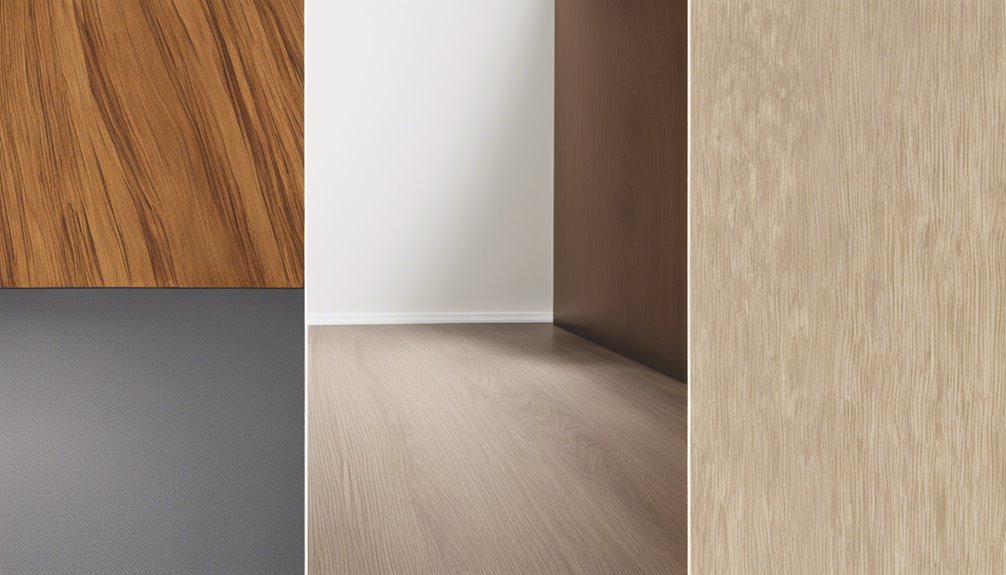
When considering durability and performance, you'll want to compare scratch resistance and water resistance levels of laminate and vinyl flooring. Laminate typically offers good scratch resistance due to its hard surface, while vinyl excels in water resistance, making it suitable for moisture-prone areas. Understanding these differences can help you choose the right flooring for your needs.
Scratch Resistance Comparison
Although both laminate and vinyl flooring are designed for durability, their scratch resistance can vary greatly based on their construction and material. Understanding the scratch resistance factors is essential for choosing the right flooring for your space.
Here's a surface durability comparison:
| Vloertype | Krasbestendigheid | Best Use |
|---|---|---|
| Laminaat | Gematigd | High-traffic areas |
| Vinyl | Hoog | Residential or commercial spaces |
Vinyl typically offers superior scratch resistance due to its thicker wear layer, making it a better option for homes with pets or children. Laminate, while durable, may show scratches more easily. So, when considering scratch resistance, think about your lifestyle and the demands you'll place on your flooring.
Water Resistance Levels
Understanding the water resistance levels of laminate and vinyl flooring is essential, especially if you're considering installation in moisture-prone areas like kitchens or bathrooms. Vinyl flooring typically boasts superior waterproof capabilities, making it an excellent choice for spaces exposed to spills and humidity. Its moisture resistance is inherent due to the PVC material, ensuring it holds up well against water damage.
On the other hand, laminate flooring generally requires more caution. While some laminate options offer decent moisture resistance, they're not fully waterproof. Prolonged exposure to water can lead to swelling and damage. Ultimately, if you prioritize waterproof capabilities and durability in wet environments, vinyl flooring is the clear winner, giving you peace of mind and freedom from water-related issues.
Esthetische opties
When choosing between laminate and vinyl flooring, you'll find a wide range of design options available. Both materials offer various textures and finishes that can mimic natural surfaces like wood or stone. Understanding these aesthetic choices can help you select the flooring that best suits your style and space.
Design Variety
Both laminate and vinyl flooring offer a wide range of design options to suit various aesthetic preferences. You'll find that both materials come in numerous color choices and pattern options, allowing you to express your style freely. Whether you prefer rustic wood looks or sleek modern tiles, there's something for everyone.
Here's a quick comparison of design variety:
| Functie | Laminaatvloeren | Vinylvloeren |
|---|---|---|
| Kleurkeuzes | Wide range, including wood tones | Extensive, including vivid colors |
| Pattern Options | Wood, stone, abstract | Wood, stone, geometric |
| Customization | Limited to planks | Highly customizable |
| Duurzaamheid | Gematigd | Highly durable |
| Kosten | Generally affordable | Varies, often budget-friendly |
Explore these options to find the perfect fit for your space!
Texture and Finish
The design variety of laminate and vinyl flooring extends beyond color and patterns, encompassing texture and finish as well. You'll find that both options offer unique aesthetic choices that enhance the overall atmosphere of your space. Here are some key aspects to reflect on:
- Surface feel: Laminate can mimic natural wood grains, while vinyl offers a smoother, more uniform texture.
- Visual appeal: Both materials come in a wide range of finishes, from matte to glossy.
- Duurzaamheid: Textured surfaces can hide scratches and wear better than smooth ones.
- Onderhoud: Some finishes require more upkeep than others, affecting long-term appearance.
Choosing the right texture and finish not only elevates your flooring's visual appeal but also impacts the surface feel and comfort underfoot.
Cost Comparison
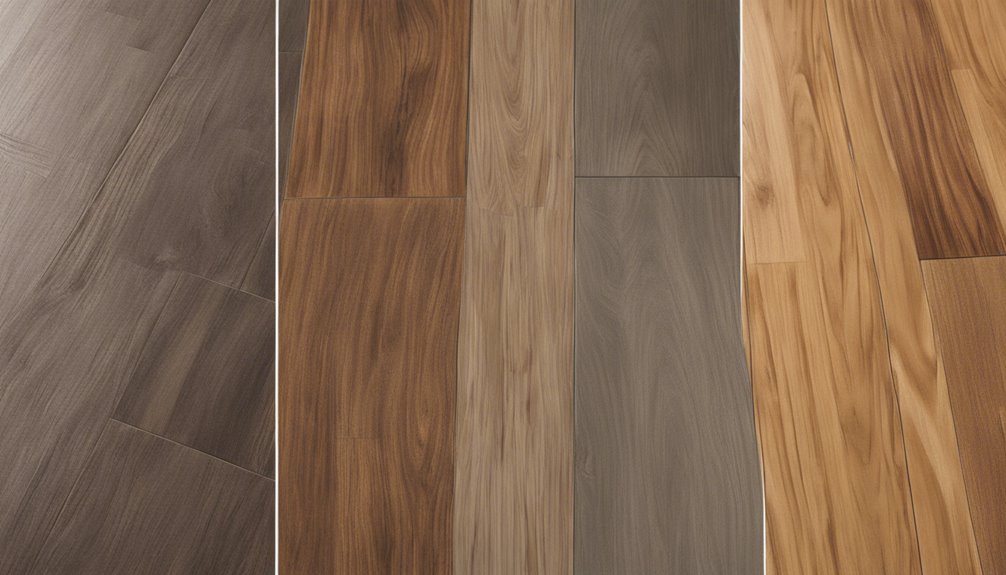
Although laminate and vinyl flooring serve as popular choices for homeowners, their cost structures can differ markedly. When you're making budget considerations, it's important to understand the price differences between the two. Laminate flooring typically ranges from $1 to $5 per square foot, making it a cost-effective option for many. In contrast, vinyl flooring can range from $2 to $7 per square foot, depending on the quality and style. While initial costs are significant, you should also factor in installation expenses, which can vary based on the complexity of the job. Ultimately, understanding these cost dynamics will help you make an informed decision that aligns with your financial goals while still achieving the aesthetic you desire.
Veelgestelde vragen
Can Laminate Flooring Be Refinished or Resurfaced?
You might think about refinishing your laminate flooring, but you'll find it's not as straightforward as hardwood. Laminate typically isn't designed for refinishing methods since its top layer is a photographic image covered with a clear coat. Resurfacing options are limited; you can't sand it down like wood. Instead, consider replacing damaged planks or using area rugs to cover imperfections. Embracing a fresh look can provide the freedom for change without the hassle of refinishing.
Is Vinyl Flooring Suitable for Outdoor Use?
Vinyl flooring isn't typically recommended for outdoor use due to limited outdoor durability. It can suffer from sun damage, temperature fluctuations, and moisture exposure. However, there are specialized products designed for outdoor environments, offering better resistance. If you're considering installation options, look for vinyl specifically labeled for outdoor applications, ensuring it can withstand the elements while providing the freedom and aesthetics you want. Always check product specifications for suitability before making a decision.
What Is the Environmental Impact of Laminate Versus Vinyl?
When it comes to environmental impact, you're really walking a tightrope between laminate and vinyl. Laminate often incorporates sustainability practices, using recycled wood fibers, but can be less biodegradable. Vinyl, however, has limited recycling options and may release harmful chemicals during production. If you're looking for eco-friendliness, consider the entire lifecycle of each material. It's essential to weigh these factors to make a choice that aligns with your values and needs.
How Do Laminate and Vinyl Flooring Feel Underfoot?
When considering how laminate and vinyl flooring feel underfoot, you'll notice distinct comfort levels. Laminate tends to be firmer, offering less cushioning, which can lead to a harder feel. In contrast, vinyl often provides a softer, more cushioned experience, enhancing comfort. Additionally, vinyl generally has better sound absorption properties, reducing noise when you walk. Ultimately, your choice will depend on your personal preference for comfort and acoustic qualities in your space.
Are There Any Health Concerns Associated With Laminate or Vinyl Flooring?
When you step onto your new flooring, it should feel like a safe haven, not a cause for concern. However, there are health considerations with laminate and vinyl options. Both can emit formaldehyde, a chemical linked to respiratory issues with long-term exposure. While vinyl may contain phthalates, which raise chemical exposure concerns, choosing low-emission products can help create a healthier environment. Your freedom from worry starts with informed decisions on flooring materials.

